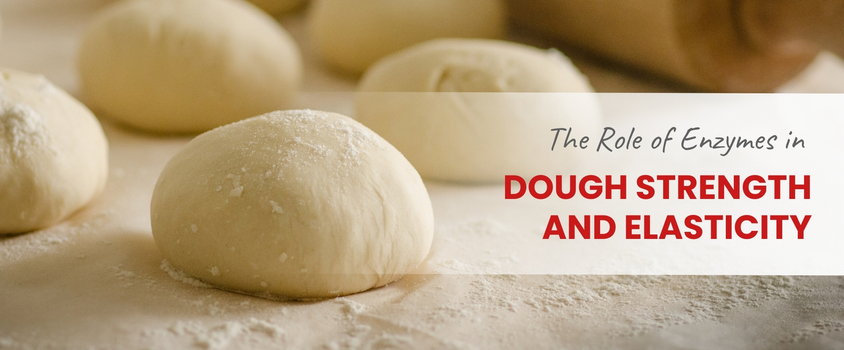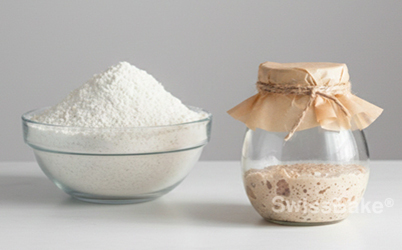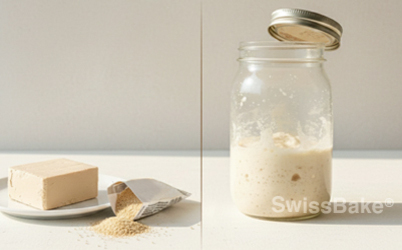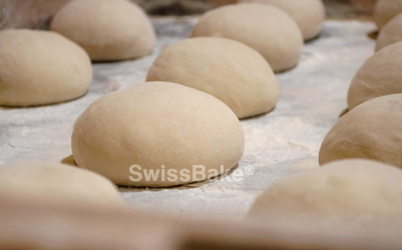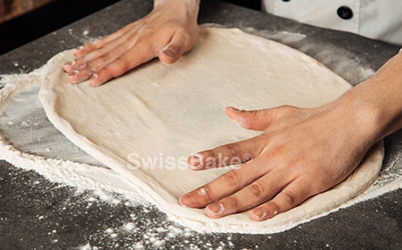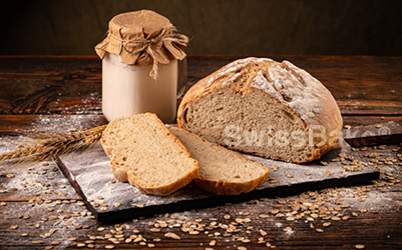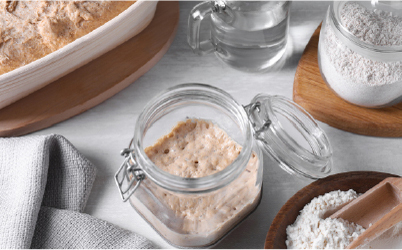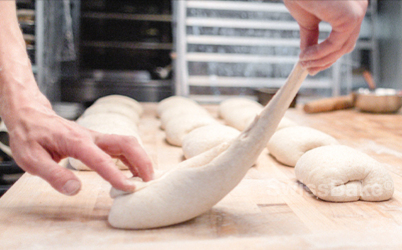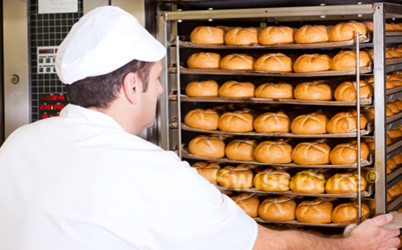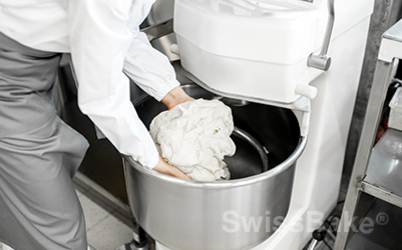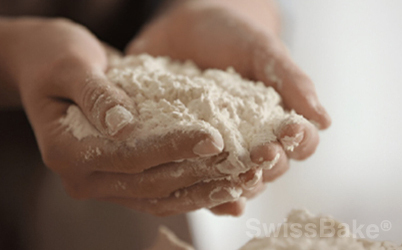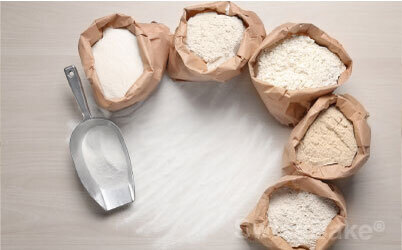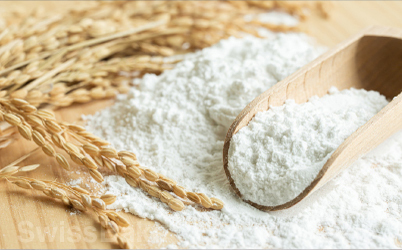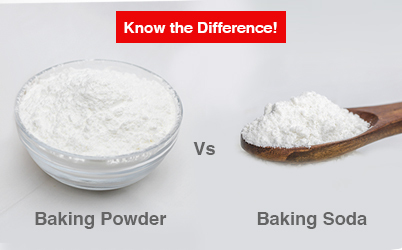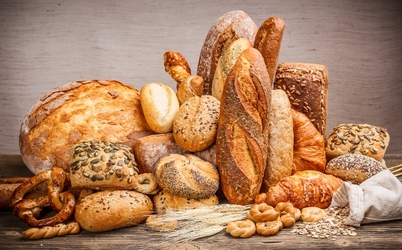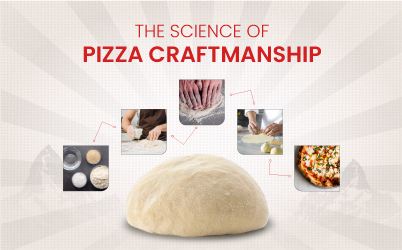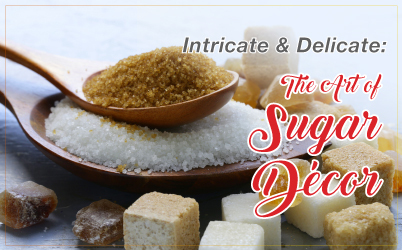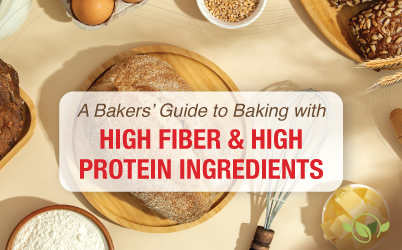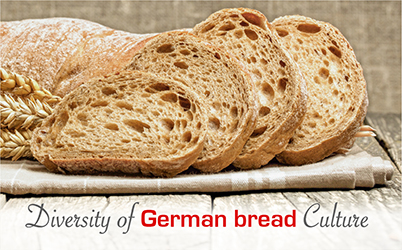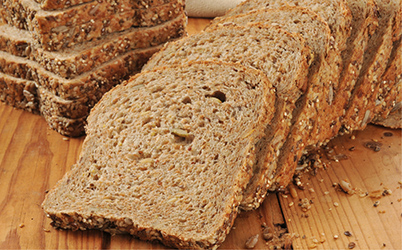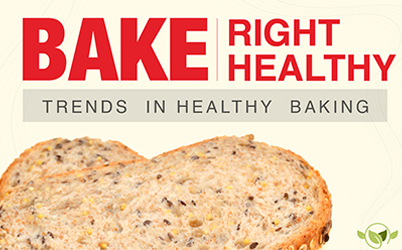The Role of Enzymes in Dough Strength and Elasticity
UNDERSTANDING THE ROLE OF ENZYMES IN DOUGH STRENGTH AND ELASTICITY
In the world of baking, the chemistry of dough is a fascinating field. One of the most critical components influencing dough strength and elasticity is enzymes. Understanding how enzymes work can significantly impact the quality of baked goods, particularly bread, pastries, and other dough-based products.
WHAT ARE ENZYMES AND THEIR ROLE IN DOUGH?
Enzymes are biological catalysts that accelerate chemical reactions within the dough. In baking, they help break down the starches, proteins, and fats in flour, influencing the texture, flavour and shelf life of the final product. The primary enzymes used in dough-making include amylase, protease, and lipase, each playing a unique role in the baking process.
Amylase: The Starch Converter
Amylase is an enzyme that breaks down starches into simpler sugars. This process is crucial in dough-making because it provides food for the yeast, leading to the production of carbon dioxide, which makes the dough rise. The presence of amylase ensures that the dough has a good structure and volume. Additionally, the sugars produced by amylase contribute to the Maillard reaction during baking, giving the crust its golden-brown color and enhancing the flavour.
Protease: The Protein Breaker
Protease is another essential enzyme in dough-making, responsible for breaking down proteins, particularly gluten. Gluten is a network of proteins that gives dough its elasticity and strength. By breaking down these proteins, protease makes the dough more extensible, which is especially beneficial in products like pizza dough and baguettes, where a stretchy dough is desired. However, the activity of protease must be carefully controlled. Excessive protease activity can weaken the gluten network too much, resulting in a dough that is too slack and difficult to work with.
Lipase: The Fat Modifier
Lipase is an enzyme that breaks down fats into fatty acids and glycerol. In dough, lipase can improve the crumb texture and extend the shelf life of baked goods by slowing down the staling process. The presence of lipase also contributes to the flavor development in dough, especially in enriched doughs that contain higher fat content, such as brioche and croissants.
HOW ENZYMES ENHANCE DOUGH STRENGTH AND ELASTICITY?
Dough strength refers to the dough's ability to retain gas during fermentation, while elasticity is its capacity to stretch without breaking. Both of these characteristics are crucial for achieving a light, airy crumb structure in breads and pastries.
Enzyme Activity in Gluten Development:
Gluten is the primary protein in wheat flour responsible for dough strength. When flour is mixed with water, gluten proteins form a network that traps gas bubbles produced during fermentation. Enzymes like proteases modify this gluten network by breaking down some of the protein chains, making the dough more extensible and easier to shape.
Balancing Dough Strength and Elasticity:
The key to successful baking lies in balancing dough strength and elasticity. If the dough is too strong, it will be tough and difficult to stretch, resulting in dense baked goods. Conversely, if the dough is too elastic, it will not hold its shape during baking. Enzymes help achieve this balance by modulating gluten development and improving dough handling characteristics.
THE BALANCE OF ENZYMATIC ACTIVITY
Enzyme Interaction in Dough
The balance between different enzymes is crucial for achieving the desired dough characteristics. For example, while amylase increases sugar levels for yeast fermentation, too much sugar can cause over-fermentation, leading to a sticky dough. Similarly, while protease makes the dough more extensible, too much activity can weaken the gluten network, affecting the dough’s ability to trap gases and rise properly.
Controlling Enzyme Activity in Dough
Bakers can control enzyme activity by adjusting the dough’s temperature, hydration, and resting time. For instance, colder temperatures slow down enzymatic activity, while warmer temperatures speed it up. This is why dough proofing times are carefully monitored in professional baking.
CHALLENGES IN USING ENZYMES IN BAKING
While enzymes offer numerous benefits, they must be used with care to avoid potential pitfalls. Overuse of enzymes can lead to excessive dough weakening, resulting in poor volume and texture. Additionally, enzyme activity must be carefully controlled during mixing, fermentation, and baking to achieve the desired results.
Over-Extension of Dough:
Excessive enzyme activity, particularly from proteases, can lead to over-extension of the dough, resulting in a weak gluten network. This can cause the dough to collapse during fermentation or baking, leading to poor volume and texture.
Inconsistent Results:
Enzyme activity can vary depending on the quality of the flour and environmental conditions. Bakers must carefully monitor dough performance and adjust enzyme levels as needed to achieve consistent results.
PRACTICAL APPLICATIONS OF ENZYMES IN PROFESSIONAL BAKING
Enhancing Flavor and Texture:
Enzymes contribute to the development of complex flavours and desirable textures in baked goods. For example, amylases break down starches into sugars, which feed the yeast and enhance the flavour profile of the bread. Proteases improve dough extensibility, resulting in a tender crumb structure.
Improving Dough Handling:
By incorporating enzymes into dough formulations, bakers can improve dough handling characteristics, making it easier to shape and stretch. This is particularly beneficial for producing artisan breads, pastry doughs and pizza bases that require precise handling and shaping techniques.
Extending Shelf Life:
Enzymes like lipases can improve the shelf life of baked goods by slowing down the staling process. This is particularly important for commercial bakeries that need to maintain product freshness during distribution and storage.
The Use of Commercial Enzyme Preparations:
In modern baking, commercial enzyme preparations are often used to ensure consistent dough quality. These preparations are designed to provide the optimal balance of enzymatic activity, regardless of flour variability or environmental conditions. This is particularly important in large-scale baking operations where consistency is key.
CONCLUSION: MASTERING ENZYMATIC CONTROL FOR BETTER BAKED GOODS
Enzymes play a pivotal role in the science of baking, influencing dough strength, elasticity, flavor, and texture. By understanding and controlling enzyme activity, bakers can create consistently high-quality products that meet the demands of today’s consumers. Whether you are a professional baker or an enthusiast, mastering the role of enzymes in dough-making is key to elevating your baking skills.
At SwissBake®, we recognize the importance of enzymes in professional baking. Our range of baking solutions is designed to optimize dough performance, ensuring that every batch delivers consistent, high-quality results. Explore our selection of enzyme-enhanced products to elevate your baking to the next level.

